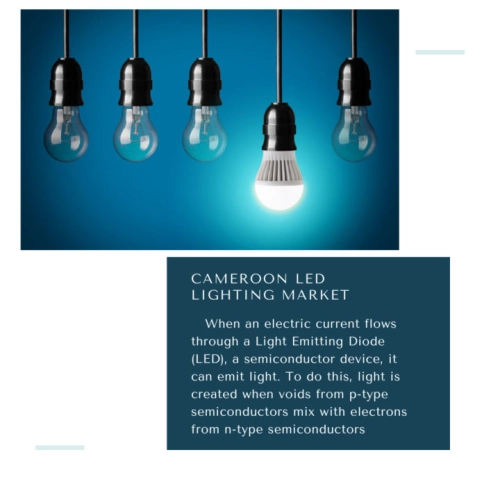
- Get in Touch with Us

Last Updated: Apr 25, 2025 | Study Period: 2022-2030
When an electric current flows through a Light Emitting Diode (LED), a semiconductor device, it can emit light. To do this, light is created when voids from p-type semiconductors mix with electrons from n-type semiconductors.

The Cameroon LED Lighting Market accounted for $XX Billion in 2021 and is anticipated to reach $XX Billion by 2030, registering a CAGR of XX% from 2022 to 2030.
Energy savings and economic benefits of transition towards efficient lighting in residential buildings in Cameroon. Over 20% of the electricity used in Cameroon's residential sector goes toward lighting.
There is a need for the efficient use of the available energy given the unreliable and insufficient energy supply in the nation.
The many artificial lighting technologies now in use, as well as the financial and environmental advantages of switching from incandescent to compact fluorescent lamp (CFL) and light emitting diode (LED) lighting in residential buildings in Buea, Cameroon.
Using the net present value (NPV), benefit cost ratio (BCR), simple payback period (PBP), and life cycle cost analysis, the economic assessment for replacing incandescent bulbs with CFL and LED taking into account an average daily lighting time of six hours was also carried out (LCC).
The technologies with the lowest and highest LCC were LED and incandescent, respectively. CFL and LED replacement for incandescent lighting reduces greenhouse gas (GHG) emissions from buildings by 66.6% and 83.3%, respectively.
The findings show that switching to efficient lighting in Cameroon's residential sector has significant economic and environmental advantages.
Through the development and execution of beneficial policies, the Cameroonian government must hasten the adoption of LED.
| Sl no | Topic |
| 1 | Market Segmentation |
| 2 | Scope of the report |
| 3 | Abbreviations |
| 4 | Research Methodology |
| 5 | Executive Summary |
| 6 | Introduction |
| 7 | Insights from Industry stakeholders |
| 8 | Cost breakdown of Product by sub-components and average profit margin |
| 9 | Disruptive innovation in the Industry |
| 10 | Technology trends in the Industry |
| 11 | Consumer trends in the industry |
| 12 | Recent Production Milestones |
| 13 | Component Manufacturing in US, EU and China |
| 14 | COVID-19 impact on overall market |
| 15 | COVID-19 impact on Production of components |
| 16 | COVID-19 impact on Point of sale |
| 17 | Market Segmentation, Dynamics and Forecast by Geography, 2022-2030 |
| 18 | Market Segmentation, Dynamics and Forecast by Product Type, 2022-2030 |
| 19 | Market Segmentation, Dynamics and Forecast by Application, 2022-2030 |
| 20 | Market Segmentation, Dynamics and Forecast by End use, 2022-2030 |
| 21 | Product installation rate by OEM, 2022 |
| 22 | Incline/Decline in Average B-2-B selling price in past 5 years |
| 23 | Competition from substitute products |
| 24 | Gross margin and average profitability of suppliers |
| 25 | New product development in past 12 months |
| 26 | M&A in past 12 months |
| 27 | Growth strategy of leading players |
| 28 | Market share of vendors, 2022 |
| 29 | Company Profiles |
| 30 | Unmet needs and opportunity for new suppliers |
| 31 | Conclusion |
| 32 | Appendix |